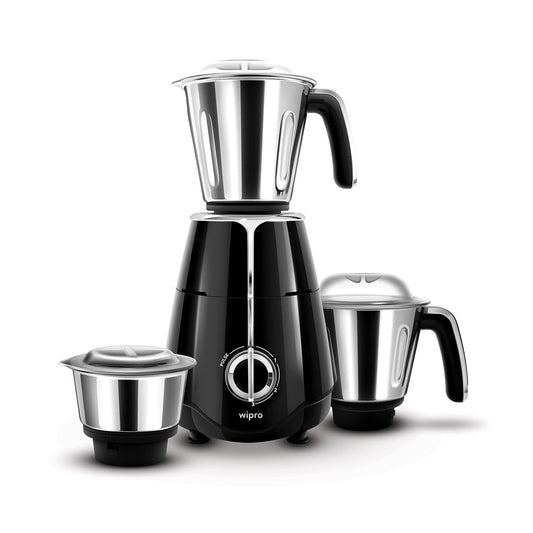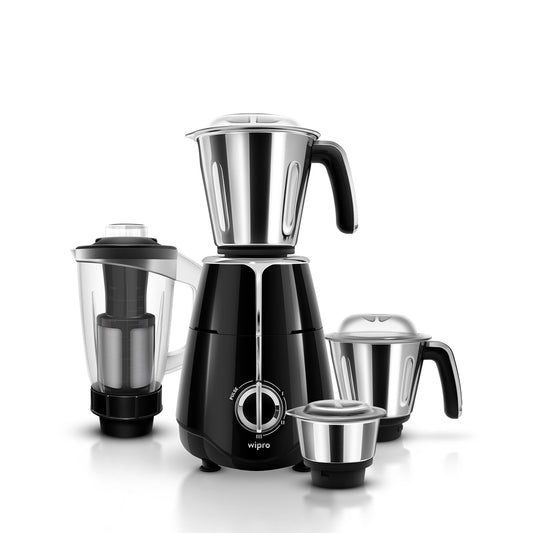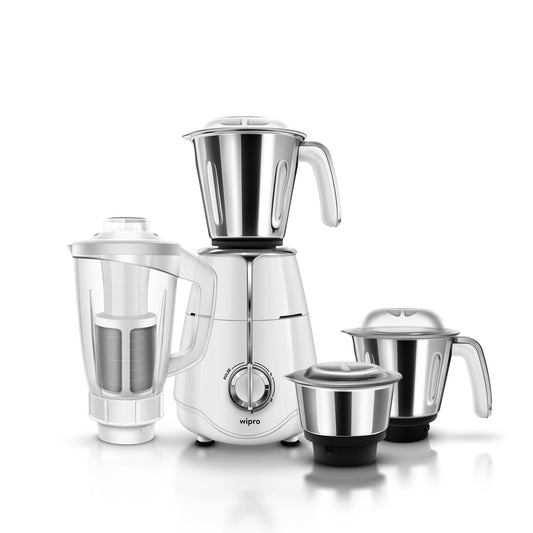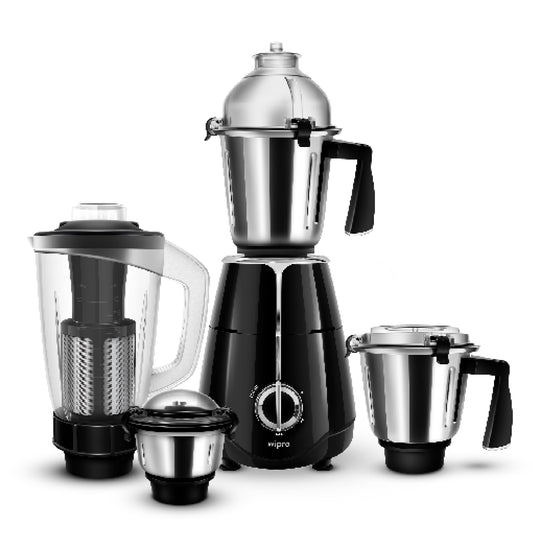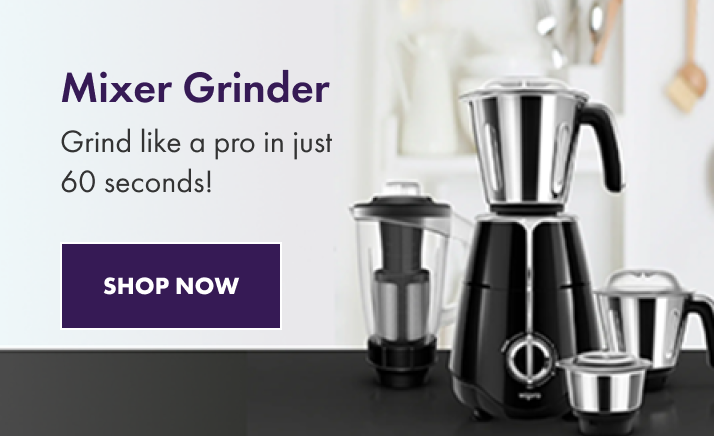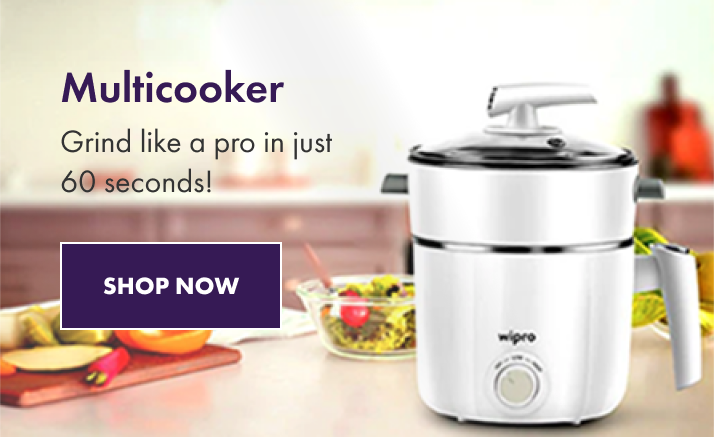 Grinding is at the heart of Indian cooking. From smooth dosa batters to fiery masalas and refreshing chutneys, the right grinder can make all the difference. But when it comes to choosing between a mixer grinder and a wet grinder, many Indian households face a common question: which one is better suited for their kitchen?
Grinding is at the heart of Indian cooking. From smooth dosa batters to fiery masalas and refreshing chutneys, the right grinder can make all the difference. But when it comes to choosing between a mixer grinder and a wet grinder, many Indian households face a common question: which one is better suited for their kitchen?In this blog, we’ll break down the differences in grinding appliances, offer a practical kitchen grinder comparison, and help you in choosing the right grinder for your cooking needs.
Understanding the Basics: Mixer Grinder vs. Wet Grinder
Let’s start by understanding what each appliance is designed for.
A mixer grinder is a compact, multipurpose kitchen appliance that blends, grinds, and mixes various ingredients. It typically comes with multiple jars and blade attachments, making it ideal for dry grinding spices, making chutneys, and blending smoothies or purees.
A wet grinder, on the other hand, is primarily used for grinding soaked ingredients into smooth batters. It works most commonly for dishes like idli, dosa, and medu vada. These appliances use heavy grinding stones instead of blades, and their slower, traditional grinding process ensures authentic texture and taste.
Differences in Grinding Appliances - A Comprehensive Comparison
1. Grinding Mechanism
- Mixer Grinder: Uses high-speed, stainless-steel blades to cut and grind ingredients quickly.
- Wet Grinder: Utilizes heavy stone rollers that crush and grind soaked ingredients slowly, preserving their texture.
2. Texture and Output
- Mixer Grinder: Produces slightly coarse results, which may vary depending on speed and ingredient type.
- Wet Grinder: Delivers exceptionally smooth and fluffy batters, ideal for traditional South Indian dishes.
3. Speed and Heat Generation
- Mixer Grinder: Operates at high speeds, which can sometimes generate heat. This may alter the texture and flavor of heat-sensitive ingredients.
- Wet Grinder: Runs at a slower pace, generating minimal heat and maintaining the natural taste of the food.
4. Versatility
- Mixer Grinder: Highly versatile and can be used for grinding spices, blending smoothies, making pastes, chutneys, and even juices.
- Wet Grinder: Primarily designed for wet grinding, best suited for idli and dosa batters.
5. Ease of Use
- Mixer Grinder: Lightweight, compact, and user-friendly. Fits well into smaller urban kitchens.
- Wet Grinder: Bulkier and heavier; requires more counter space and setup time.
6. Cleaning and Maintenance
- Mixer Grinder: Simple design makes it easy to clean and maintain.
- Wet Grinder: Cleaning the stone drum and rollers can be more labor-intensive.
Overall, the key differences in grinding appliances come down to purpose and output. While a mixer grinder offers speed and multi-functionality, a wet grinder is unmatched in delivering authentic textures for traditional Indian recipes.
Which One Works Best for Indian Cooking?
For an Indian kitchen, both appliances hold their own depending on your cooking style.
If your household regularly prepares South Indian dishes like idli, dosa, or appam, a wet grinder is great for creating the perfect fermented batter. The stone grinding ensures smoothness and consistency that’s hard to beat.
However, for most Indian kitchens where variety is key, a mixer grinder becomes indispensable. It's fast, compact, and easy to operate, making it a go-to for daily cooking needs.
In short, when it comes to Indian cooking equipment, a mixer grinder offers unmatched flexibility, while a wet grinder is best reserved for those special, traditional recipes.
Choosing the Right Grinder – A Practical Guide
Here’s what to consider when choosing the right grinder for your kitchen:
• Cooking Style
-
If your meals often include South Indian dishes like idli, dosa, or vada, a wet grinder is ideal for achieving smooth, well-fermented batters.
-
For a wider range of recipes such as chutneys, spice mixes, curry pastes and smoothies, a mixer grinder offers better flexibility.
• Kitchen Space
-
Mixer grinders are compact and easy to store, making them suitable for smaller kitchens or urban homes.
-
Wet grinders tend to be bulkier and may require more counter space and effort to handle.
Functionality Needs
-
Go for a mixer grinder if you need an appliance that can multitask like grind, blend, chop and mix, all in one.
-
A wet grinder is more specialized and best suited for a single function: wet grinding.
• Family Size
-
For small to medium-sized families, a mixer grinder like the Wipro Elato FMG206 is often sufficient and more efficient for everyday use.
• Best Recommendation
-
The Wipro Elato FMG206 1000W Mixer Grinder is a powerful, space-saving solution that handles diverse grinding tasks with ease.
-
It features a robust motor, advanced blades and multiple jars, making it perfect for the multitasking demands of modern Indian cooking.
Meet the Versatile Performer: Wipro Elato FMG206 1000W Mixer Grinder
The Wipro Elato FMG206 1000W Mixer Grinder is a powerful, space-saving solution that handles diverse grinding tasks with ease. It features a robust motor, advanced blades, and multiple jars, making it perfect for the multitasking demands of modern Indian cooking.With stone-pounding blades, overload protection, and a sleek, ergonomic design, it’s built for modern kitchens. Comes with a 2-year product and 5-year motor warranty.
Conclusion
Both mixer grinders and wet grinders serve specific needs in Indian kitchens. By understanding the differences in grinding appliances, you can confidently choose the one that fits your cooking habits. And if versatility, convenience, and performance are what you’re after, the Wipro Elato FMG206 1000W Mixer Grinder brings together the best of tradition and innovation for today’s home chefs.























































































































































































































































































































































































































































































































